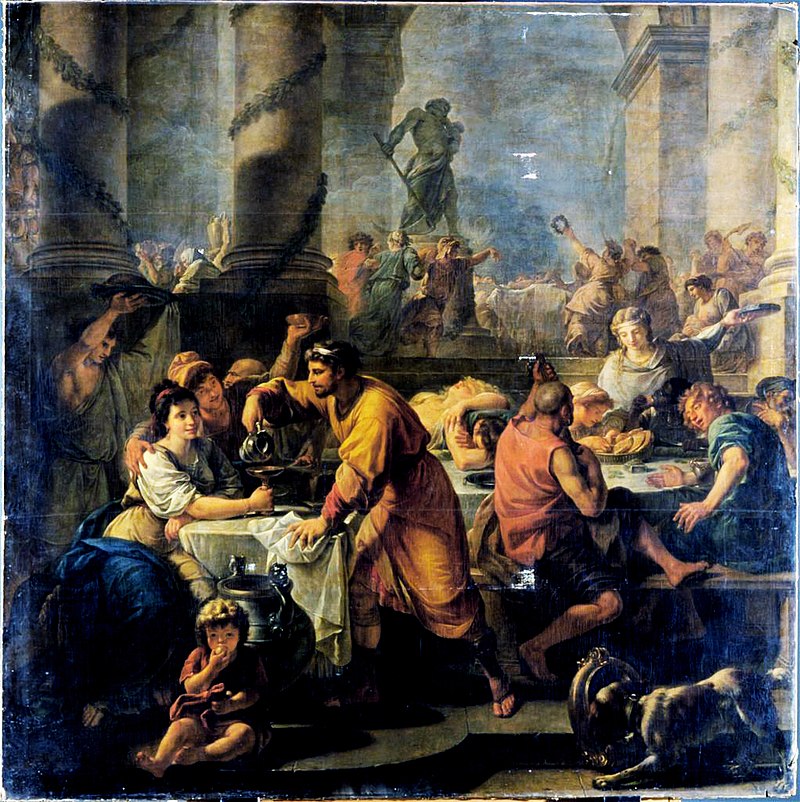
December’s crisp air and twinkling lights paint a picture of a season brimming with joy and festivities. As the year draws to a close, cultures around the world come alive with unique traditions and vibrant celebrations. However, each event is a testament to the human spirit’s resilience and capacity for merriment.
December is not just about Christmas—it’s a month filled with various cultural and religious celebrations worldwide. People from different backgrounds come together to observe traditions that range from honoring saints to commemorating historical events. Moreover, these events make a year memorable for the upcoming year.
Let’s take a journey around the globe to explore some of these significant celebrations during the holiday season.

Starting Events
St. Nicholas Day (Dec. 5 or 6): Known as the Feast of Saint Nicholas, this day is a special time for Christians. However, it honors the birthday of Saint Nicholas, who inspired the figure of Santa Claus with his generous gift-giving spirit.
Immaculate Conception Day (Dec. 8): Catholics celebrate this day to honor the Virgin Mary, believed to be born without original sin. However, it’s a day for church gatherings and festive feasts.
Bodhi Day (Dec. 8): Also known as Rohatsu, this Buddhist tradition celebrates the day when Siddartha Gautama, known as the Buddha, attained enlightenment. Moreover, many Buddhists mark this day with meditation.
Feast Day of Our Lady Guadalupe (Dec. 12): Mexicans and Mexican-Americans celebrate the feast day of Our Lady of Guadalupe, a symbol of patriotism and devotion. Additionally, pilgrims often visit the Basilica of Our Lady of Guadalupe to commemorate the Virgin Mary’s apparition in 1531.

Main Celebrations
Hanukkah (Dec. 18-26): As the final days of December approaches, Jewish families around the world kindle the menorah, marking the joyous eight-day festival of Hanukkah. This celebration commemorates the rededication of the Second Temple in Jerusalem after its desecration. However, each night, an additional candle is lit, symbolizing the triumph of light over darkness and the enduring spirit of faith. Dreidels spin, latkes (potato pancakes) sizzle, and families gather to share stories and songs, creating warm memories that illuminate the season.
Yule (Dec. 21-Jan. 1): Wiccans and Neo-Pagans celebrate Yule during the winter solstice, the darkest day of the year. However, for those in the Northern Hemisphere, December 21st or 22nd marks the winter solstice, the shortest day of the year. Yet, this astronomical event isn’t shrouded in darkness; it’s a harbinger of hope and the promise of longer days. From ancient rituals and bonfires to festive gatherings and Yuletide traditions, cultures worldwide embrace the solstice as a time of renewal and the gradual return of the sun. Traditionally, a yule log is burned to mark the sun’s renewal.
Christmas (Dec. 25): Christians worldwide celebrate Christmas to honor the birth of Jesus. Christians celebrate Christmas largely to commemorate the birth of Jesus. But the festival has also been adopted as a secular family holiday by people of all faiths. Moreover, it’s marked by an exchange of gifts as well as excitement for the arrival of Santa Claus.

Boxing Day (Dec. 26): For many former British colonies, December 26th isn’t just about leftover turkey and Christmas carols. Boxing Day, a holiday steeped in tradition, is a day for unwinding with loved ones, exchanging gifts (often those tucked away on Christmas morning), and indulging in spirited sporting events. However, In Ireland, horse racing takes center stage, while in South Africa, families gather for braais (barbecues) and cricket matches.
Zarathosht Diso (Dec. 26): Zoroastrians observe Zarathosht Diso to honor the death of their prophet, Zoroaster. In addition, the day involves visiting fire temples and offering prayers.
Start With Hopes And Wishes
Kwanzaa (Dec. 26-Jan. 1): From December 26th to January 1st, African American communities worldwide illuminate the holiday season with Kwanzaa. This seven-day celebration, rooted in African traditions and values, honors family, community, and culture. Each day is dedicated to a different principle, such as Umoja (unity) and ujamaa (cooperative economics), fostering reflection and strengthening bonds within the community. However, homes are adorned with the vibrant colors of the Kwanzaa bendera (flag), and the air is filled with the sounds of drumming and storytelling.

New Year’s Eve (Dec. 31): As the clock strikes midnight, a collective wave of cheers and jubilation washes over the planet. Moreover, New Year’s Eve, the most widely celebrated international event, is a kaleidoscope of dazzling fireworks, electrifying parties, and heartfelt countdowns. From the iconic ball drop in New York’s Times Square to the vibrant samba rhythms of Rio de Janeiro’s Copacabana beach, this night pulsates with a shared sense of hope and anticipation for the year ahead.
Therefore, December truly weaves a rich tapestry of celebrations, highlighting the diversity and unity found in cultures around the world. Each celebration adds a unique thread to this global fabric, fostering understanding and appreciation for the richness of human traditions.

